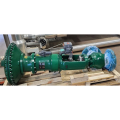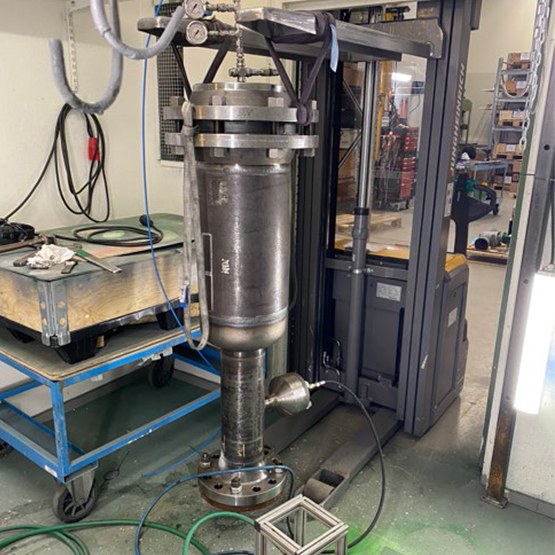Less Wear, Higher Efficiency
Any questions?
Tommi Penttilä
Sales Manager Conventional Power
Phone. 0207 416 208
Mob. 040 512 2308
Solution to a Costly Valve Problem
Need
The customer had experienced recurring damage to the internal components of their turbine bypass valve for several years. The valve is normally closed but must be ready for immediate operation to regulate production or redirect flow in case of an emergency shutdown of the steam turbine. The damage led to leakage, resulting in a high demand for spare parts and frequent maintenance.
Since the valve serves as a bypass for the turbine, the leakage also caused a direct efficiency loss - the escaping steam could no longer contribute to power generation. To maintain operational reliability, the customer had to alternate between two identical valves: one in operation and one in the workshop for maintenance. The valve’s placement in a hard-to-reach section of the pipeline, with limited accessibility, meant that each replacement required a time-consuming and costly shutdown.
Analysis
Askalon evaluated the installed valve and determined that it had leakage class IV. Since minimizing leakage is crucial for reducing wear and extending the lifespan of the valve's internal components, leakage class V was recommended for this application.
Additionally, water injection for steam cooling was being conducted directly through the valve’s trim components - a solution that increases the risk of wear. Wear damage tends to worsen leakage over time, and previous experience has shown that direct injection into the trim can accelerate this process further.
Beyond these technical challenges, the valve was located near the ceiling with limited access to lifting equipment. This made it difficult to safely and efficiently lift the valve assembly for servicing or replacement, contributing to increased downtime and maintenance costs.
Solution
Askalon designed a new valve that met the application's operational requirements and was specified with the higher leakage class V - both to extend the lifespan of the trim’s internal components and, in this case, to maximize system efficiency.
The water injection was separated from the valve and equipped with a nozzle featuring variable geometry, ensuring a fine and even spray pattern across the entire flow range. The valve was also fitted with a positioner featuring advanced diagnostics. With regular analysis, the system can now detect anomalies early, allowing for planned and preventive maintenance - reducing the risk of unplanned shutdowns.
By adapting the design to the plant’s existing conditions, optimal conditions were created for a smooth and efficient installation.
Proven Industrial Improvements
- Reduced efficiency loss due to steam leakage.
- Lower maintenance and spare parts costs.
- Only one valve needed with regular maintenance.
- Less physically demanding maintenance.
- Ability to detect emerging faults well in advance before they become critical issues.
















